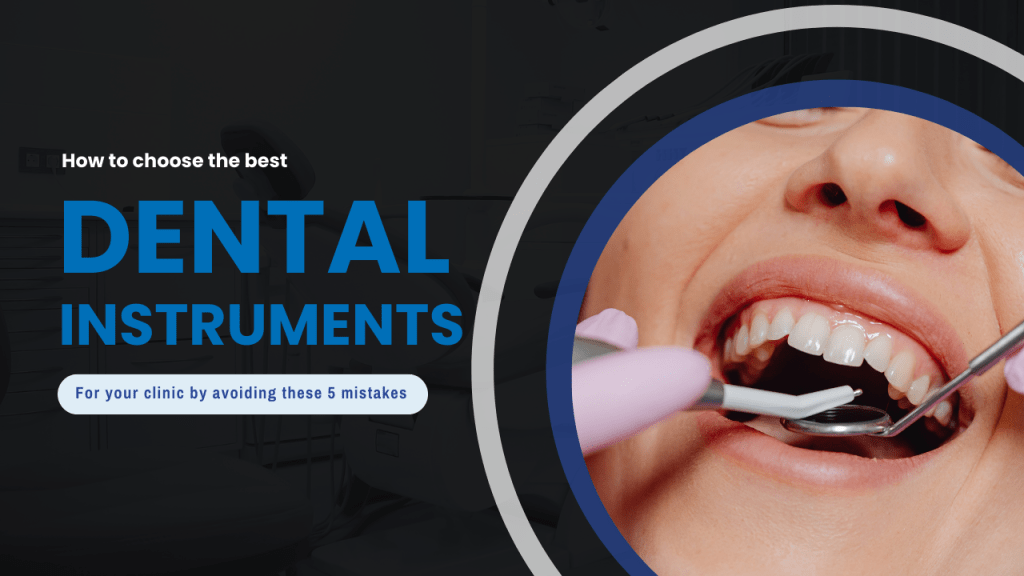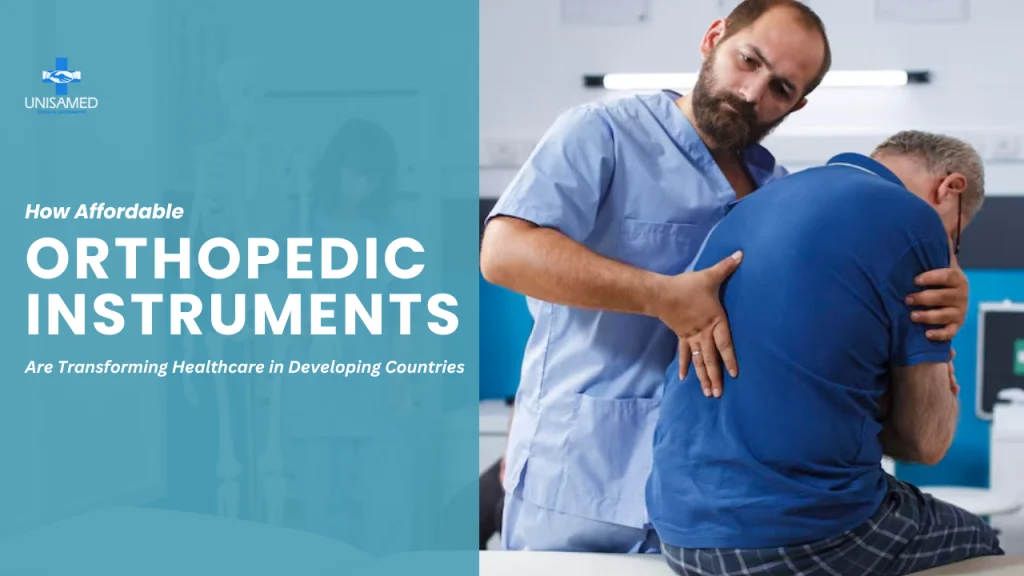
Making the right choices in dental instruments is not just about tools; great dental care is about patient safety and a profitable, workable clinical setup. Whether you are opening a dental office for the first time or upgrading your instruments, your choice will affect clinical outcomes and patient trust.
Here we enumerate the 5 most common mistakes dentists will make when buying dental instruments and how to avoid that. Practical examples, real-life case studies, SEO-optimized answers, and product recommendations will all equip you to making a well-informed and long-lasting purchase decision.
Looking to elevate your practice with top-rated, durable instruments?
Why Choosing the Right Dental Instruments Matters
The dental instruments you choose have a direct effect on your practice’s outcomes, efficiency, safety standards, and patient satisfaction. Here’s why it matters:
1. Clinical Outcome
High-grade dentistry tools make accurate diagnosis and treatment possible. Blunt or misaligned tools delay operations, and there is potential misdiagnosis.
For instance, a poor-quality dental explorer will miss all the early caries, while a sharp, ergonomically designed one can help detect demineralization before it goes too far.
2. Infection Control & Sterility
Infected or rusting tools and instruments are likely to cross-contaminate. Investing in autoclavable, rust-resistant materials keeps your patients and team safe.
For example, surgical-grade stainless steel instruments are those that survive repeated sterilization without any change in quality.
3. Cost-Effective & Durable
Cheap tools may be cheap, but they usually wear quickly. Quality instruments have a low lifetime cost as they last longer and require fewer replacements.
For example, a well-made scaler will last 5 times longer than a cheap one, thus giving a much better ROI.
Professional tip: High-quality tools improve both clinical results and business reputation.
Mistake #1: Buying Based on Price Alone
One of the most common pitfalls that clinics fall into is prioritizing price over quality. It’s understandable to want to reduce overhead, especially when starting, but dental instruments are not the place to cut corners. Cheap tools often lack precision, corrode quickly, and may not meet safety standards, which can put your patients at risk.
What happens when you buy cheap tools?
- Reduced precision during clinical procedures.
- Faster wear and tear, requiring more frequent replacements.
- Higher likelihood of causing patient discomfort or injury
What to do instead: Evaluate the long-term value of the instruments by calculating the cost-per-use. A slightly higher upfront investment often means fewer replacements, better durability, and safer outcomes for your patients.
Example: A set of ISO-certified elevators may cost 20% more, but with higher durability and better balance, they outperform non-certified ones, lasting significantly longer and improving extraction efficiency.
Want premium tools without overpaying?
Mistake #2: Ignoring Ergonomics and Operator Comfort
Dental professionals often perform intricate procedures for hours on end. Using poorly designed instruments can lead to repetitive strain injuries, reduced dexterity, and operator fatigue, especially in the wrist, hands, and forearms. This can negatively impact your efficiency and long-term career health.
Why ergonomics matter:
- Increases precision and control during procedures
- Reduces fatigue and risk of musculoskeletal disorders
- Enhances clinician well-being and performance
What to look for: Choose instruments with lightweight construction, balanced design, and textured grips (such as knurled or silicone handles) that ensure a firm, comfortable hold even with gloves.
Example: A hygienist switching from traditional curettes to ergonomically designed ones with cushioned handles reported reduced wrist fatigue after just one week, with better tactile feedback and improved scaling performance.
Prevent fatigue and boost control—Explore ergonomic dental tools.
Mistake #3: Using Generic Instruments for Specialized Procedures
While general-purpose kits might seem convenient, using them across all procedures can reduce clinical effectiveness and patient comfort. Dentistry involves a wide range of procedures—restorative, surgical, pediatric, orthodontic—and each has unique instrumentation needs.
Why it’s a mistake:
- Generic tools often lack the precision needed for specialized tasks
- Increases procedure time and patient discomfort
- Leads to inconsistent treatment quality
What to do: Build a custom instrument setup based on your clinical focus. For instance, oral surgeons need different elevators and retractors than a general dentist performing scaling or restorative work.
A pediatric clinic that transitioned from standard tools to child-specific instruments experienced a significant improvement in patient cooperation and procedure efficiency, resulting in higher patient satisfaction and increased return visits.
Tailor your toolkit to your practice—Shop specialty instruments.
Mistake #4: Skipping Certification and Quality Verification
With so many sellers online, especially on marketplaces, it’s tempting to grab a seemingly good deal. But without proper certification, there’s no guarantee that the tools you receive will perform safely or effectively. This puts both your license and your patients at risk.
What to look for in certifications:
- CE Mark (Conformité Européenne) for European standards
- ISO 13485 for medical device quality systems
- FDA approval for products used in the United States
Why it matters: Certified tools go through rigorous quality checks and comply with safety and durability standards. You’re assured of sterility, precision, and consistency in performance.
Example: A periodontal probe without ISO certification may yield inconsistent pocket depth readings, potentially leading to incorrect treatment plans.
Mistake #5: Overlooking Compatibility with Sterilization Processes
Sterilization is a non-negotiable aspect of dental practice. Instruments that are not compatible with your sterilization methods (autoclave, ultrasonic, or chemical) can warp, rust, or degrade over time, posing serious risks to hygiene and tool longevity.
Common consequences of incompatibility:
- Corrosion and reduced instrument life span
- Risk of cross-contamination due to improper sterilization
- Costly replacements due to tool damage
What to check: Look for terms like “autoclavable,” “rust-resistant,” and “surgical-grade stainless steel” in product specs. Tools made with German or Japanese stainless steel are known for superior resistance to sterilization wear.
Example: A clinic that switched to German stainless steel instruments reported zero rust issues after 300+ sterilization cycles, compared to frequent replacements with previous tools.
Conclusion: Make the Right Choice for Your Clinic
Choosing the best dental instruments for your clinic is a decision that goes far beyond just looking at the price tag. Your tools directly impact the quality of care you provide, your efficiency, patient satisfaction, and even your long-term costs. By avoiding these 5 common mistakes—such as buying based on price alone, ignoring ergonomics, or overlooking certification—you can build a toolkit that improves clinical outcomes and reduces unnecessary expenses.
Investing in high-quality, ergonomic, specialized, and certified instruments will save you money in the long run, prevent injury, and boost your practice’s reputation. Choose tools that offer superior durability, comfort, and precision to ensure you provide the best care for your patients while maintaining a healthy, efficient practice.


